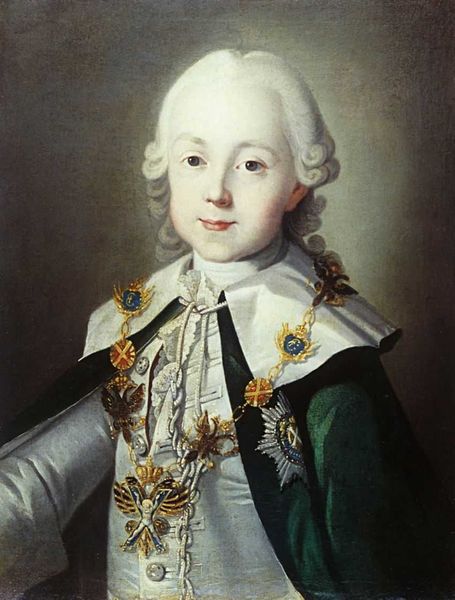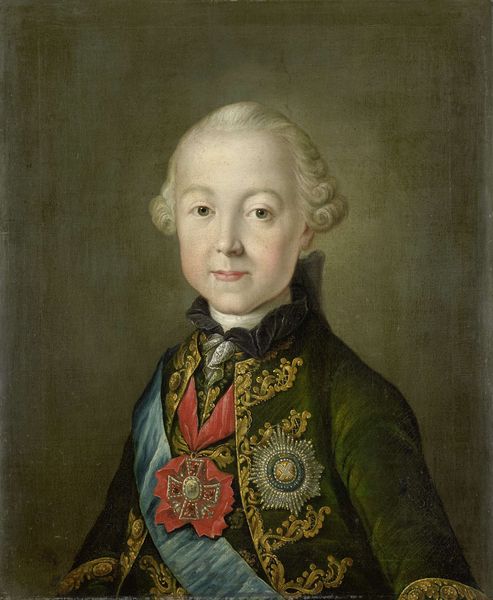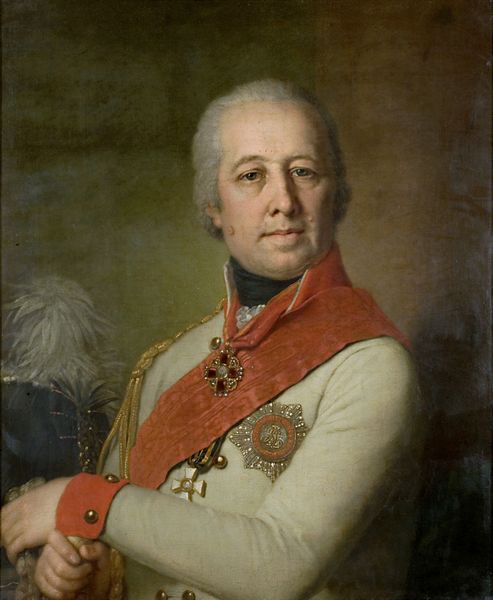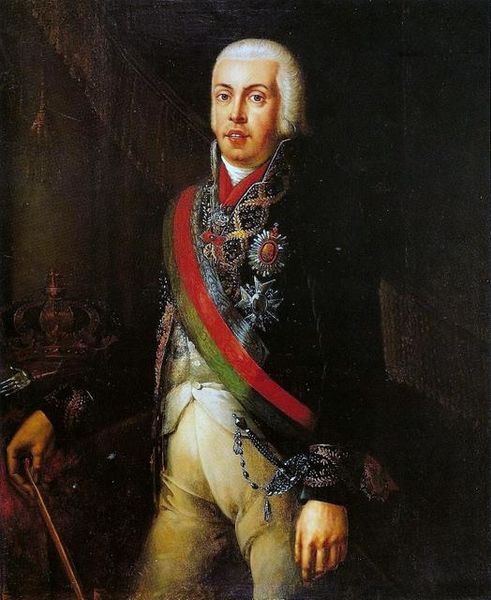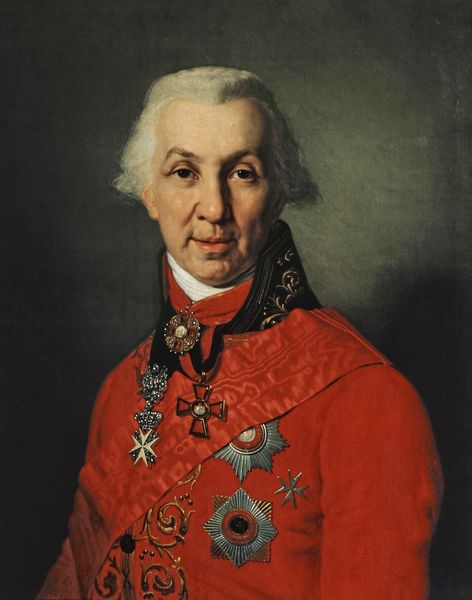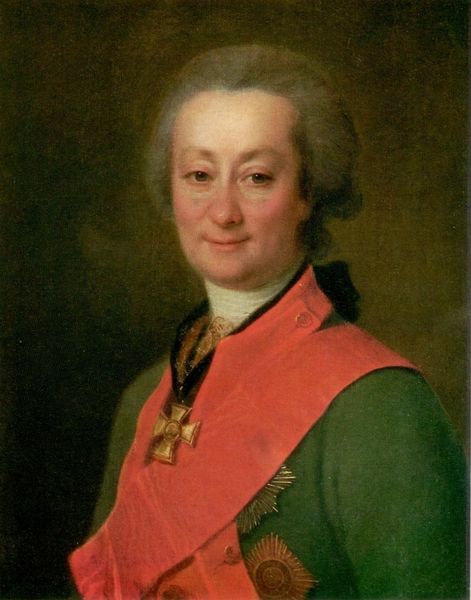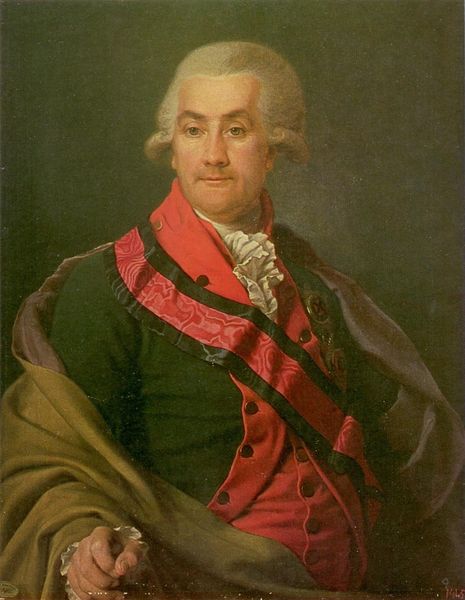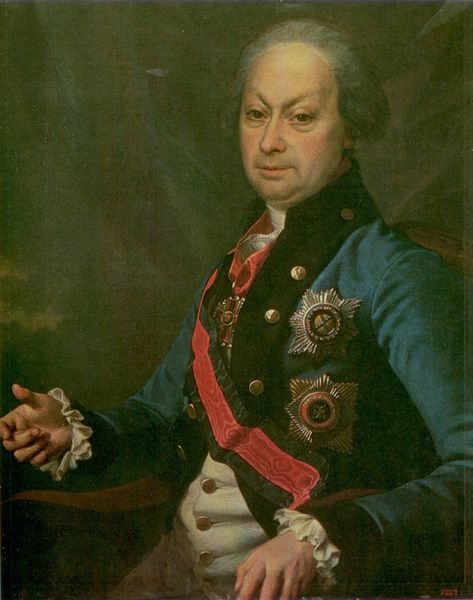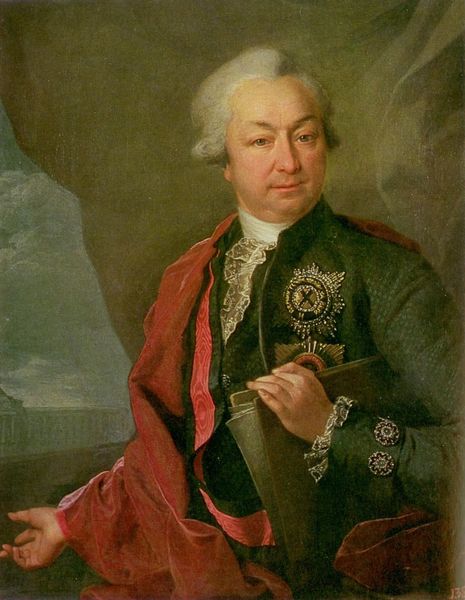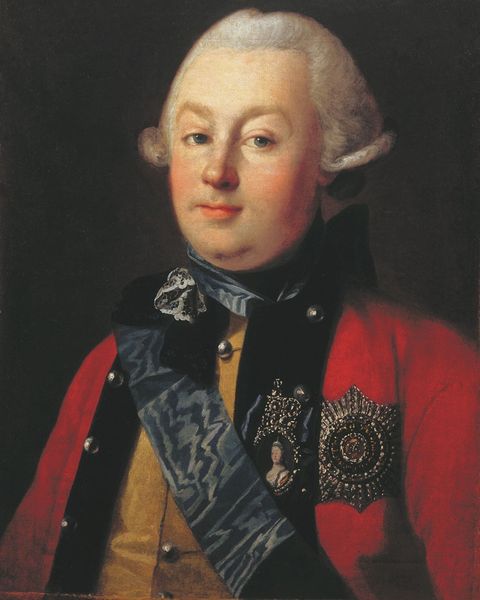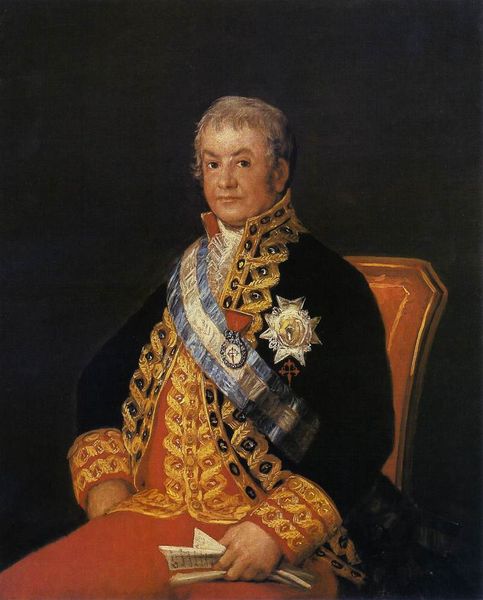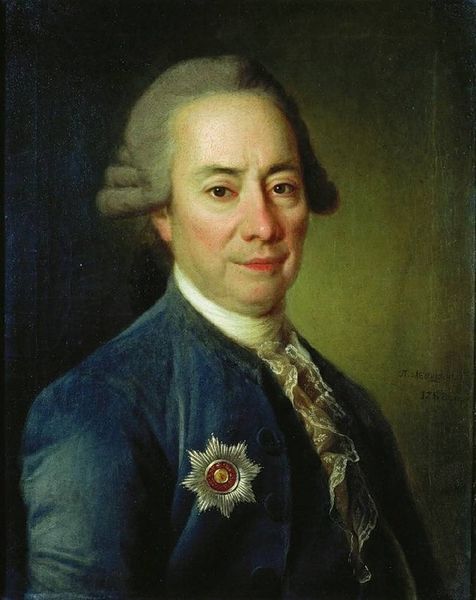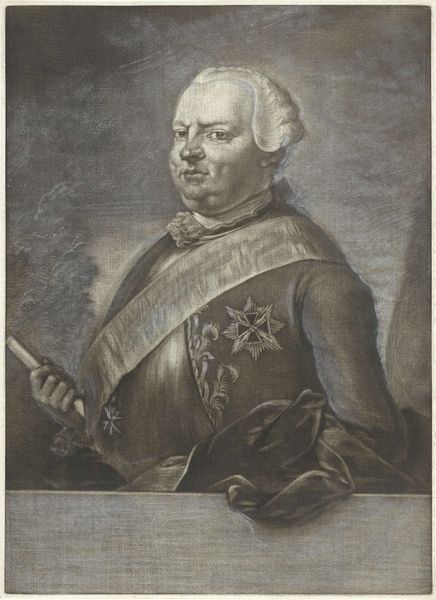
painting, oil-paint
#
portrait
#
baroque
#
painting
#
oil-paint
#
figuration
#
history-painting
#
realism
Copyright: Public domain
Curator: Welcome. Here we have a portrait of Alexandr Viazemsky, painted in oil on canvas. It’s currently held here at the Tretyakov Gallery in Moscow. Editor: It strikes me as rather austere, though the subject’s face possesses a hint of...smugness, perhaps? The somber palette is punctuated by the almost gaudy ornamentation on his attire. Curator: The painting employs classical elements – consider the emphasis on line, clarity of form, and a subdued realism. Observe how the composition directs your eye, subtly guiding attention towards key compositional features like the exquisitely detailed hand resting prominently on the table, juxtaposed with the cold legal documents beside it. Editor: And isn’t that placement deliberate? Viazemsky served as Prosecutor General and held other positions of considerable power under Catherine the Great. Those details, including the medals and the ermine, were calculated to broadcast a clear message about class and power to his contemporaries – as if the faint air of disdain on his face weren't enough. Look closely at the ornamentation and the floral embellishments; even there, hints of gendered associations are hard at play to convey aristocratic standing. Curator: It's also fascinating how the painter captures the textures, from the velvet of his coat to the sheen of his decorations, the stiff legal documents and the rosy tint of the chair. A subtle exploration of material properties that elevates the work beyond a mere representation. Editor: Agreed, but I see it as part of a larger visual language. The Baroque flourishes and realist precision become tools for constructing a very particular narrative of authority during the reign of Catherine. His proximity to both imperial law and courtly fashion cannot be understated. Even the shadows surrounding his head feel imbued with the weight of his position. Curator: Perhaps. Yet, to reduce this portrait to purely its socio-political function is to ignore its remarkable formal qualities – its balance, its tonal range, and the sheer mastery of the brushstrokes. Editor: Perhaps, but acknowledging the interplay of power, gender, and class doesn’t diminish the artwork's formal achievement; it enriches our reading, allows us to recognize and analyze this portrait as something more than just brilliant aesthetics. Curator: A valuable interpretation indeed. Editor: It brings another layer of questions and insight, definitely something I appreciate.
Comments
No comments
Be the first to comment and join the conversation on the ultimate creative platform.
